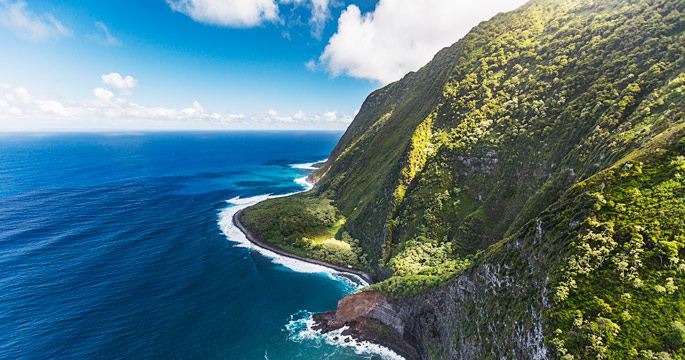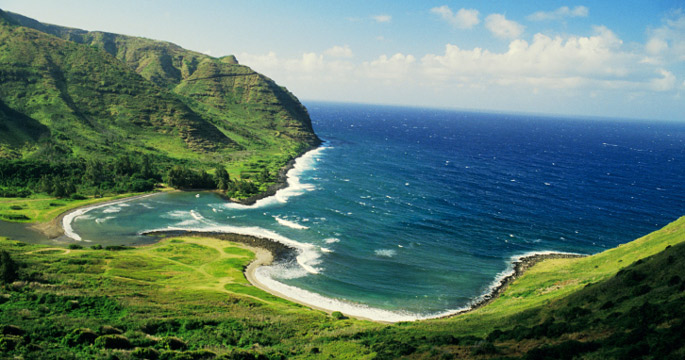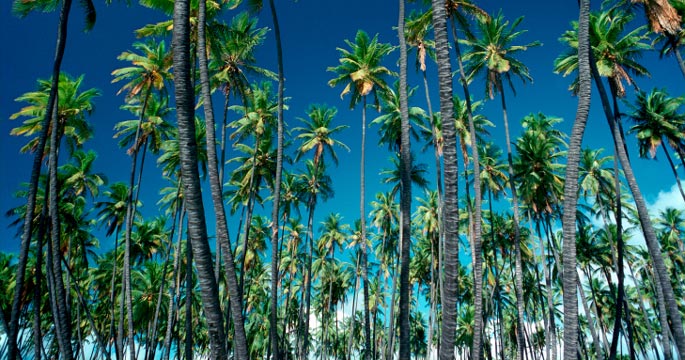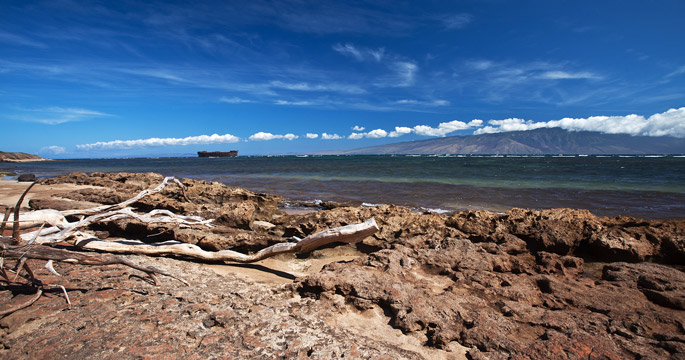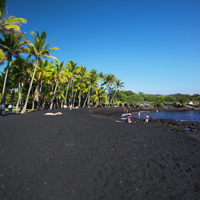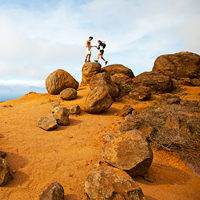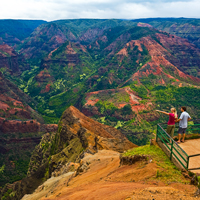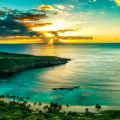Traditions are alive and well on Molokai, where farming and ranching is still a way of life for many, and tourism supplements rather than dominates the economy. There are no high rises or mega resorts, no traffic lights or streetlights, and no franchise eateries or stores. Instead, you’ll find quiet villages, where accommodations run to small inns and rental cottages, and nightlife is more about stars than bars.
1 Rural Roots
Though no longer a major pineapple producer, Molokai is still an agricultural island, where family plots grow bananas, papaya, sweet potatoes and taro, and cattle roam the island’s western grasslands. The primary settlement of Kaunakakai is still known as a paniolo (Hawaiian cowboy) town, and a place where dinner is more likely to come fresh from the garden and the sea rather than the refrigerator.
2 Home of the Hula
Oral traditions name Molokai as the island where the hula dance was born. Now synonymous with Hawaiian culture and often incorporated into luau floor shows, hula was originally danced not only as a form of entertainment, but as a way to preserve the island’s oral history and mythology. The stories of hula are told through gestures and the accompanying chants, and one of the best places to see its purest form is the annual Ka Hula Piko festival, which is a showcase for traditional dance, culture and food.
3 The One Percent
Of the more than seven million visitors who come to the Hawaiian Islands each year, fewer than one in a hundred will make it to Molokai. As a result, you won’t find tour buses clogging the roads or excursion boats lining the harbors. Things get even quieter in the evenings when day-trippers from Maui reboard the ferry, leaving the island to its residents and a very few longer-term guests.
4 Something Fishy
Long before the modern science of aquaculture developed, Hawaii’s native people were raising seafood in coastal impounds made of coral and lava rock, which kept fish corralled while allowing sea water to flow in and out. Some of the best preserved are located near One Alii Beach Park. These structures are thought to be 700 to 800 years old. Two in particular, Keawanui and Ualapue Fishponds, have been designated as National Historic Landmarks.
5 A King’s Vacation
King Kamehameha V constructed his summer home at Kaunakakai Beach and raised cattle on land that later became the sprawling Molokai Ranch, which is Hawaii’s second largest. He’s also credited with planting hundreds of coconut trees in what is now the Kapuaiwa Coconut Beach Park. This shaded grove is one of the island’s signature landmarks—just be sure to watch for falling coconuts if you enter.
6 St. Damien’s Legacy
The Catholic missionary Joseph de Veuster was granted sainthood for aiding the leprosy victims exiled to Molokai’s remote Kalaupapa peninsula. The site of this former colony is now open to the public as Kalaupapa National Historical Park, but it can be reached only by a rugged trail. Here visitors can learn the story of St. Damien and the colony, and visit St. Philomena Roman Catholic Church, where Damien served and was originally buried in the adjacent cemetery.
7 Cliff Hanger
The precipitous trail leading to the Kalaupapa colony drops 1,700 feet in three miles and often runs just inches from the brink of a cliff. Surefooted mules ferry visitors up and down this dramatic pathway. Plan on devoting most of the day to the ride, as the three- mile trip takes about 90 minutes each way, and there’s a break at the bottom to explore and have lunch. The path is also open to ambitious hikers looking for a good workout.
8 Southern Exposure
The longest barrier reef in Hawaii stretches for nearly 30 miles along Molokai’s southern coast. The clear waters that envelop these coral gardens are home to hundreds of species of fish and are a favorite with divers and snorkelers. The site called Murphy’s Beach is a favorite entry point, as it provides calm water and shaded beachside facilities for gearing up.
9 Seaside Heights
Along the island’s northern shore, the world’s tallest sea cliffs rise abruptly to heights of almost 4,000 feet. In the rainy season, tendril-like waterfalls cascade down the green cliff faces to form feathery plumes of spray. A short hike from the parking area at Palaau State Park takes you to the edge for a look down. Boat cruises along the bases of the cliff face originate from Kaunakakai harbor and from the island of Maui, where you can also book helicopter fly-bys of the cliffs.
10 Honey Do
Bees turn the flowers of the kiawe tree into a pure white honey that is prized by gourmands. Known as meli in the Hawaiian language, this sweet concoction is produced at a select few apiaries on Molokai, and sold at local stores.


